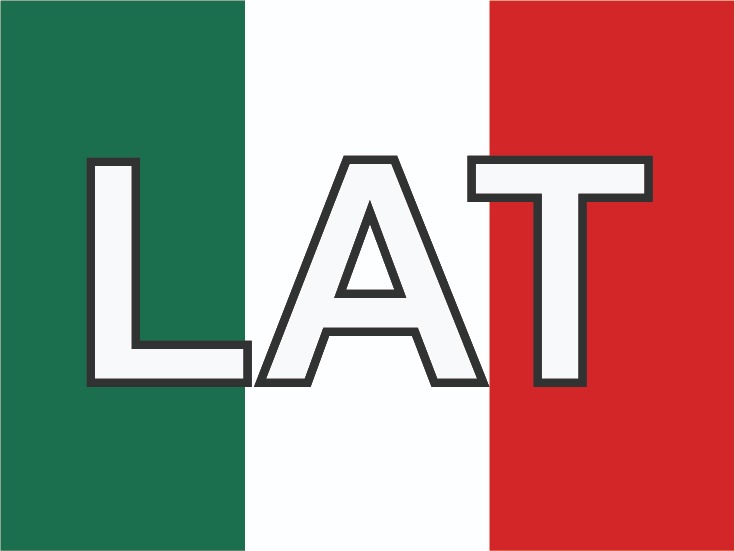Relationship between super antigenicity, antimicrobial resistance and origin of Staphylococcus aureus isolated
Abstract
Introduction:Staphylococcus aureus is a pathogen that causes food poisoning as well as hospital and community acquired infections.
Objective:Establish the profile of superantigen genes among hospital isolates in relation to clinical specimen type, susceptibility to antibiotics and hospital or community acquisition.
Methods:Eighty one isolates obtained from patients at Colombian hospital, were classified by antimicrobial susceptibility, specimen type and hospital or community acquired . The PCR uniplex and multiplex was used for detection of 22 superantigen genes (18 enterotoxins, tsst-1 and three exfoliative toxins).
Results:Ninety five point one percent of isolates harbored one or more of the genes with an average of 5.6 genes. Prevalence of individual genes was variable and the most prevalent was seg (51.9%). 39 genotypes were obtained, and the genotype gimnou (complete egc cluster) was the most prevalent alone (16.0%) and in association with other genes (13.6%). The correlation between presence of superantigens and clinical specimen or antimicrobial susceptibility showed no significant difference. But there was significant difference between presence of superantigens and the origin of the isolates, hospital or community acquired (p= 0.049).
Conclusions:The results show the variability of the superantigen genes profile in hospital isolates and shows no conclusive relationship with the clinical sample type and antimicrobial susceptibility, but there was correlation with community and hospital isolates. The analysis of the interplay between virulence, epidemic and antibiotic resistance of bacterial populations is needed to predict the future of infectious diseases.
Authors
Downloads
Keywords
- Staphylococcus aureus
- hospital infection
- toxin
- antibiotic resistance
- microbial sensivity
- genotype
- genetic variation
References
.Larkin EA, Carman RJ, Krakauer T, Stiles BG. Staphylococcus aureus: The toxic presence of a pathogen extraordinaire. Current Medicinal Chemistry. 2009;16:4003–4019
Bronner S, Monteil H, Prévost G. Regulation of virulence determinants in Staphylococcus aureus: complexity and applications. FEMS Microbiology Reviews. 2004;28:183–200
François P, Scherl A, Hochstrasser D. Schrenzel J. Proteomic approaches to study Staphylococcus aureus pathogenesis. J Proteomics. 2010;73:701–708
Dinges MM, Orwin PM, Schlievert PM. Exotoxins of Staphylococcus aureus. Clin Microbiol Rev. 2000;13:16–34
Varshney AK, Mediavilla JR, Robiou N, Guh A, Wang X, Gialanella P, et al. Diverse enterotoxin gene profiles among clonal complexes of Staphylococcus aureus isolates from the Bronx, New York. Appl Environ Microbiol. 2009;75(21):6839–6849
Holtfreter S, Grumann D, Schmudde M, Nguyen H, Eichler P, Strommenger B, et al. Clonal distribution of superantigen genes in clinical Staphylococcus aureus isolates. J Clin Microbiol. 2007;45:2669–2680
McCormick JK, Yarwood JM, Schlievert PM. Toxic shock syndrome and bacterial superantigens: an update. Ann Rev Microbiol. 2001;55:77–104
Jarraud S, Peyrat MA, Lim A, Tristan A, Bes M, Mougel C, et al. egc, a highly prevalent operon of enterotoxin gene.forms a putative nursery of superantigens in Staphylococcus aureus. J Immunol. 2001;166:669–677
Kuroda M, Ohta T, Uchiyama I, Baba T, Yuzawa H, Kobayashi I, et al. Whole genome sequencing of methicillin-resistant Staphylococcus aureus. Lancet. 2001;357:1225–1239
Chiang YC, Liao WW, Fan CM, Pai WY, Chiou CS, Tsen HY. PCR detection of Staphylococcal enterotoxins (SEs) N, O, P, Q, R, U, and survey of SE types in Staphylococcus aureus isolates from food-poisoning cases in Taiwán. Int J Food Microbiol. 2008;121(1):66–73
Wilson G, Seo KS, Cartwright RA, Connelley T, Chuang-Smith ON, Merriman J, et al. A novel core genome-encoded superantigen contributes to lethality of community-associated MRSA necrotizing pneumonia. PLoS Pathog. 2011;7(10):e1002271
Blaiotta G, Fusco V, von Eiff Ch, Villani F, Becker K . Biotyping of enterotoxigenic Staphylococcus aureus by enterotoxin gene cluster (egc) polymorphism and spa typing analyses. Appl Environ Microbiol. 2006;72(9):6117–6123
Lindsay JA, Holden MT. Understanding the rise of the superbug: investigation of the evolution and genomic variation of Staphylococcus aureus. Funct Integr Genomics. 2006;6:186–201
Baba TF, Takeuchi M, Kuroda H, Yuzawa K, Aoki A, Oguchi Y; et al. Genome and virulence determinants of high virulence community-acquired MRSA. Lancet. 2002;359:1819–1827
Ladhani S, Joannou CL, Lochrie DP, Evans RW, Poston SM. Clinical, microbial, and biochemical aspects of the exfoliative toxins causing staphylococcal scalded-skin syndrome. Clin Microbiol Rev. 1999;12:224–242
Plano LR. Staphylococcus aureus exfoliative toxins: how they cause disease. J Invest Dermatol. 2004;122:1070–1077
Kondo I, Sakurai S, Sarai Y, Futaki S. Two serotypes of exfoliation and their distribution in staphylococcal strains isolated from patients with scalded-skin syndrome. J Clin Microbiol. 1975;1:397–400
Ruzicková V, Voller J, Pantucek R, Petrás P, Doskar J. Multiplex PCR for detection of three exfoliative toxin serotype genes in Staphylococcus aureus. Folia Microbiol. 2005;50:499–502
Yamaguchi T, Hayashi T, Takami H, Ohnishi M. Murata T, Nakayama K. et al. Complete nucleotide sequence of Staphylococcus aureus exfoliative toxin B plasmid and identification of a novel ADP-ribosyltransferase, EDIN-C. Infect Immun. 2001;69:7760–7771
Ferry T, Thomas D, Perpoint T, Lina G, Monneret G, Mohammedi I, et al. Analysis of superantigenic toxin Vbeta T-cell signatures produced during cases of staphylococcal toxic shock syndrome and septic shock. Clin Microbiol Infect. 2008;14:546–554
Fleischer B, Schrezenmeier H. T cell stimulation by staphylococcal enterotoxins. Clonally variable response and requirement for major histocompatibility complex class II molecules on accessory or target cells. J Exp Med. 1988;167:1697–1707
Martineau F, Picard JR, Roy PR, Ouellette M, Bergeron MG. Species-specific and ubiquitous-DNA-based assays for rapid identification of Staphylococcus aureus. J Clin Microbiol. 1998;36:618–623
Johnson WM, Tyler SD, Ewan EP, Pollard DR, Rozee KR. Detection of genes for enterotoxins, exfoliative toxins, and toxic shock syndrome toxin 1 in Staphylococcus aureus by the polymerase chain reaction. J Clin Microbiol. 1991;29(3):426–430
Mehrotra M, Wang G, Johnson WM. Multiplex PCR for detection of genes for Staphylococcus aureus enterotoxins, exfoliative toxins, toxic shock syndrome toxin 1, and methicillin resistance. J Clin Microbiol. 2000;38:1032–1035
Omoe K, Hu DL, Takahashi-Omoe H, Nakane A, Shinagawa K. Comprehensive analysis of classical and newly described staphylococcal superantigenic toxin genes in Staphylococcus aureus isolates. FEMS Microbiol Lett. 2005;246:191–198
Briceño DF, Correa A, Torres JA, Pacheco R; Grupo de Resistencia Bacteriana Nosocomial de Colombia. Actualización de la resistencia a antimicrobianos de bacilos Gram negativos aislados en hospitales de nivel III de Colombia: años 2006, 2007 y 2008. Biomédica. 2010;30:371–381
Xie Y, He Y, Gehring A, Hu Y, Li Q, Tu S, Shi X. Genotypes and toxin gene profiles of Staphylococcus aureus clinical isolates from China. PLos One. 2011;6(12):e28276
Portillo B, Moreno J, Yomayusa N, Alvarez C, Castro B, Escobar J, et al. Molecular epidemiology and characterization of virulence genes of community- acquired and hospital-acquired methicillin-resistan Staphylococcus aureus isolates in Colombia. Int J Inf Dis. 2013;17:e744
van Belkum A, Melles DC, Snijders SV, van Leeuwen WB, Wertheim HF, Nouwen JL, et al. Clonal distribution and differential occurrence of the enterotoxin gene cluster, egc, in carriage- versus bacteremia-associated isolates of Staphylococcus aureus. J Clin Microbiol. 2006;44:1555–1557
Copyright (c) 2016 Universidad del Valle

This work is licensed under a Creative Commons Attribution-NonCommercial 4.0 International License.
The copy rights of the articles published in Colombia Médica belong to the Universidad del Valle. The contents of the articles that appear in the Journal are exclusively the responsibility of the authors and do not necessarily reflect the opinions of the Editorial Committee of the Journal. It is allowed to reproduce the material published in Colombia Médica without prior authorization for non-commercial use




















